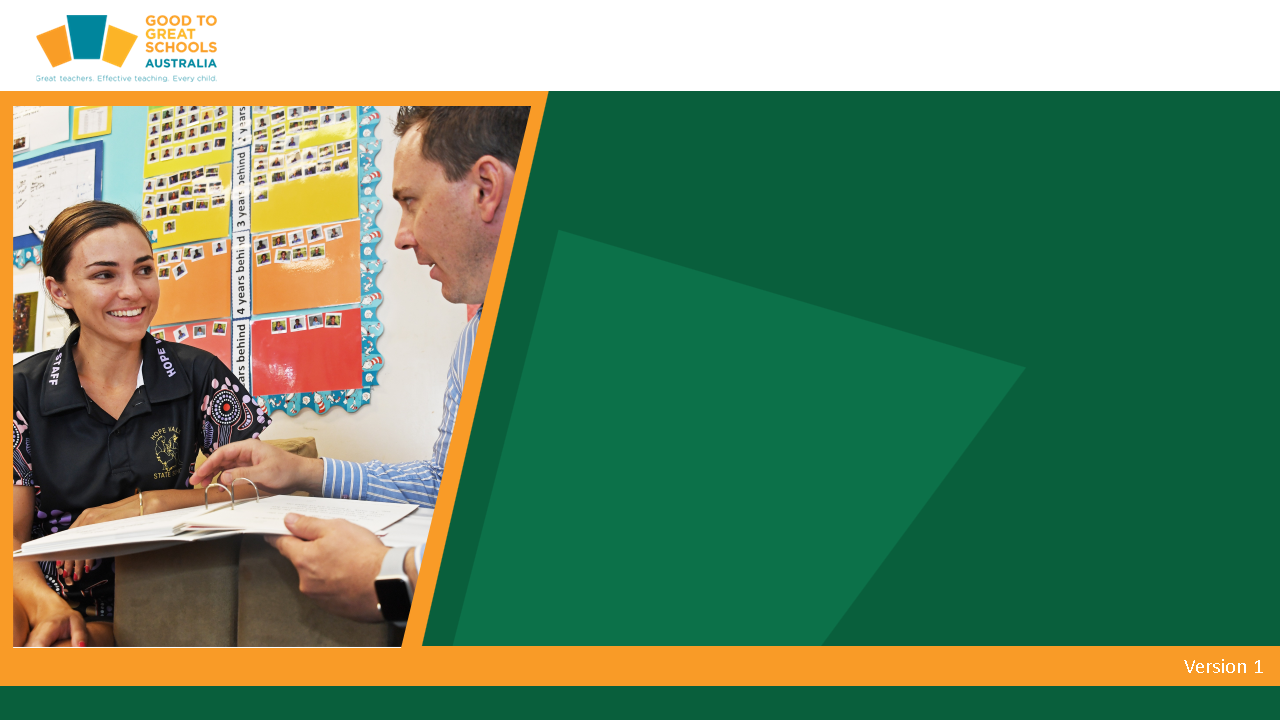Practice Apply Evidence-Based Learnings
-
Module Introduction2 Topics
-
Delivered With Fidelity14 Topics|2 Tests
-
Cover
-
Module Objective
-
What Happens When Apply Evidence-based Learnings is Delivered with Fidelity
-
The Process of How to Apply Evidence-Based Learnings
-
Applying Evidence-Based Learning: Scenario
-
A Teacher Receives Regular Expert Coaching
-
Video: Coaching Conversations
-
The School Team Builds a Positive High-Expectations School Culture
-
The School Team Shares Responsibility for Improvement
-
Video: Sharing Responsibility
-
Teachers Improve Their Practice and Teach to Mastery
-
Teachers Improve Practice and Teach to Mastery: Scenario
-
Check Your Understanding
-
Test Your Understanding
-
Cover
-
Not Delivered With Fidelity12 Topics|2 Tests
-
Cover
-
What Happens When Apply Evidence-based Learnings is Not Delivered with Fidelity
-
Expert Coaching is not Delivered
-
Expert Coaching is not Delivered Scenario
-
The School Team does not Contribute to a High-Expectations School Culture
-
The School Team does not Contribute to a High-Expectations School Culture: Scenario
-
The Teaching Team does not Share Responsibility for Improvement
-
The Teaching Team does not Share Responsibility for Improvement: Scenario
-
Teachers do not Improve Practice or Teach to Mastery
-
Teachers do Not Improve Practice or Teach to Mastery: Scenario
-
Check Your Understanding
-
Test Your Understanding
-
Cover
-
Barriers That Impede Fidelity9 Topics|2 Tests
-
Cover
-
Barriers That Impede Applying Evidence-Based Learnings with Fidelity
-
Using Deductive Logic to Identify the Cause of the Barrier
-
Not Knowing Why Applying Evidence-Based Learnings is Important
-
Not Knowing How to Apply Evidence-based Learnings
-
Time is Allocated to Unrelated Tasks
-
External Interruptions
-
Check Your Understanding
-
Test Your Understanding
-
Cover
-
Removing Barriers That Impede Fidelity11 Topics|2 Tests
-
Cover
-
Ways to Tackle Barriers so Apply Evidence-Based Learnings is Delivered with Fidelity
-
Not Knowing Why Applying Evidence-Based Learnings Is Important
-
Not Knowing Why Applying Evidence-Based Learnings Is Important
-
Video: Not Knowing How to Apply Evidence-Based Learnings
-
Not Knowing How to Apply Evidence-Based Learnings
-
Allocated to Unrelated Tasks
-
Process
-
Process
-
Check Your Understanding
-
Test Your Understanding
-
Cover
-
Module Completion Survey1 Topic
Participants 5
What Happens When Apply Evidence-based Learnings is Delivered with Fidelity
Kimberly December 5, 2023

What Happens When Apply Evidence-Based Learnings is Delivered with Fidelity
The Technique
Effective teaching is comprised of evidence-based practices that have proven to have a positive impact on student mastery. As teachers engage in effective teaching, coaches help them use observation and student data to identify evidence-based learnings. Then teachers apply evidence-based learnings to improve student practice. Principals apply evidence-based learnings to support a culture of continuous improvement across the school.


Applying evidence-based learnings occurs at the classroom level through coaching conversations (Cycle 2) where instruction coaches and teachers identify evidence-based learnings, apply them in the classroom and apply them to advance student mastery. Then principals use school professional conversations (Cycle 5) to expand evidence-based learnings through the school.
What It Achieves
When teachers apply evidence-based learnings they solidify effective teaching techniques into their practice and articulate why students are progressing at or above the standard rate. When principals apply evidence-based learnings through school professional conversations, they are fostering a culture of continuous improvement.
More Detail
Applying evidence-based learnings involves the entire teaching team.
- Teachers and teaching assistants come prepared to discuss what they are working on in the classroom, including reflections and challenges.
- The instruction coach leads coaching conversations and supports teachers’ reflections on their use of effective teaching techniques and identify improvement actions.
- The principal routinely schedules professional conversations between team members to share evidence-based learnings and reinforce a culture of continuous improvement.

